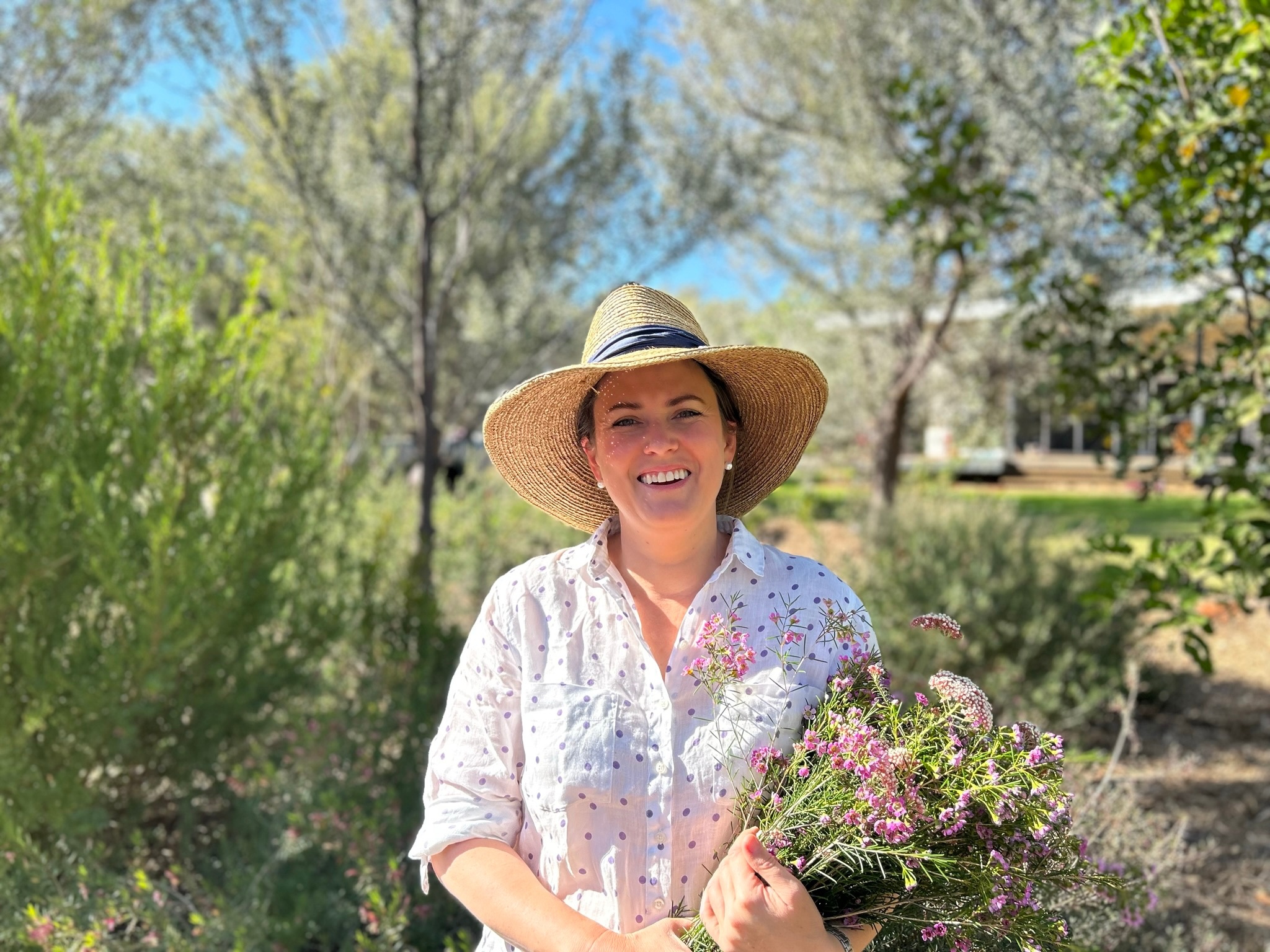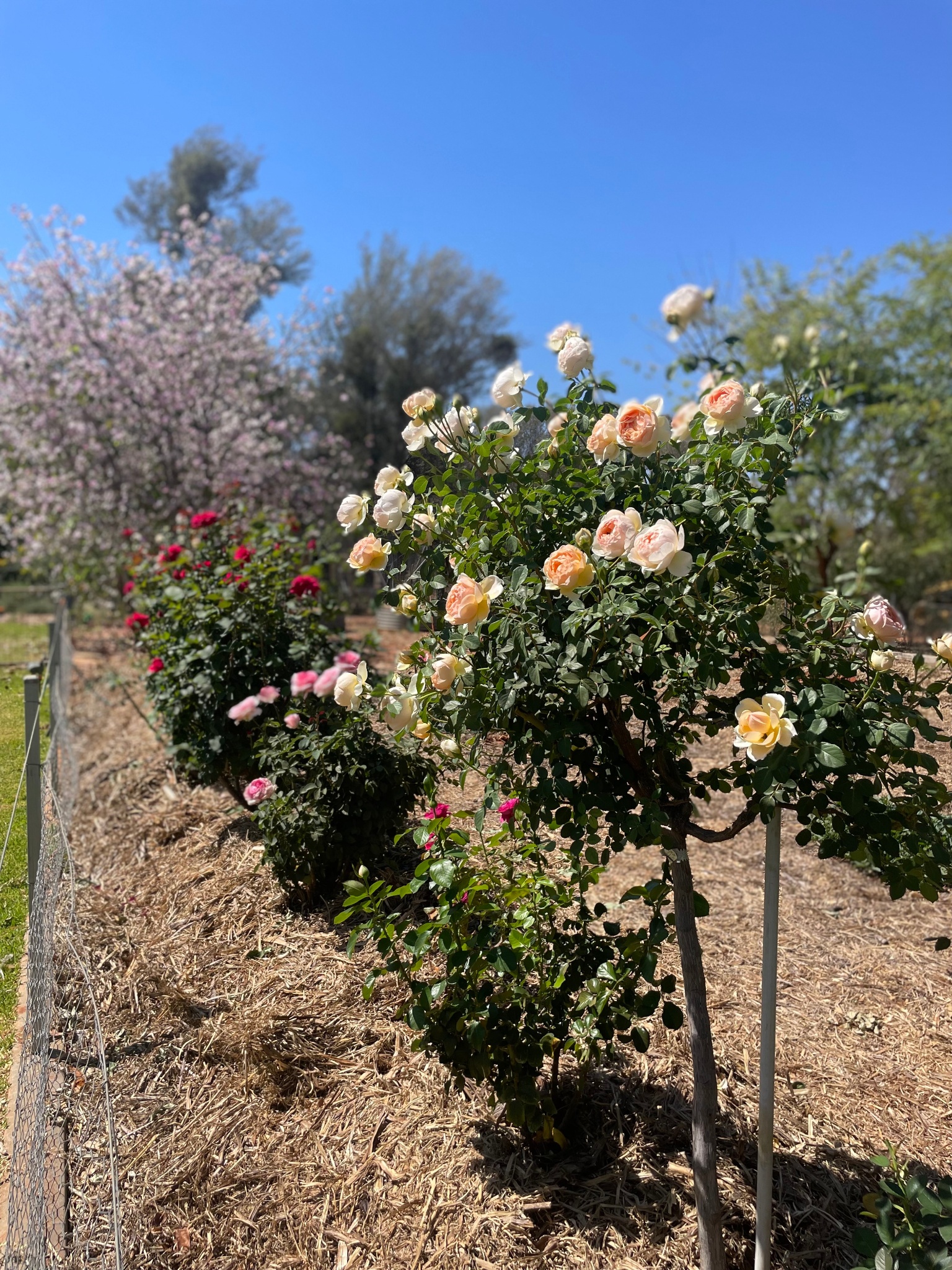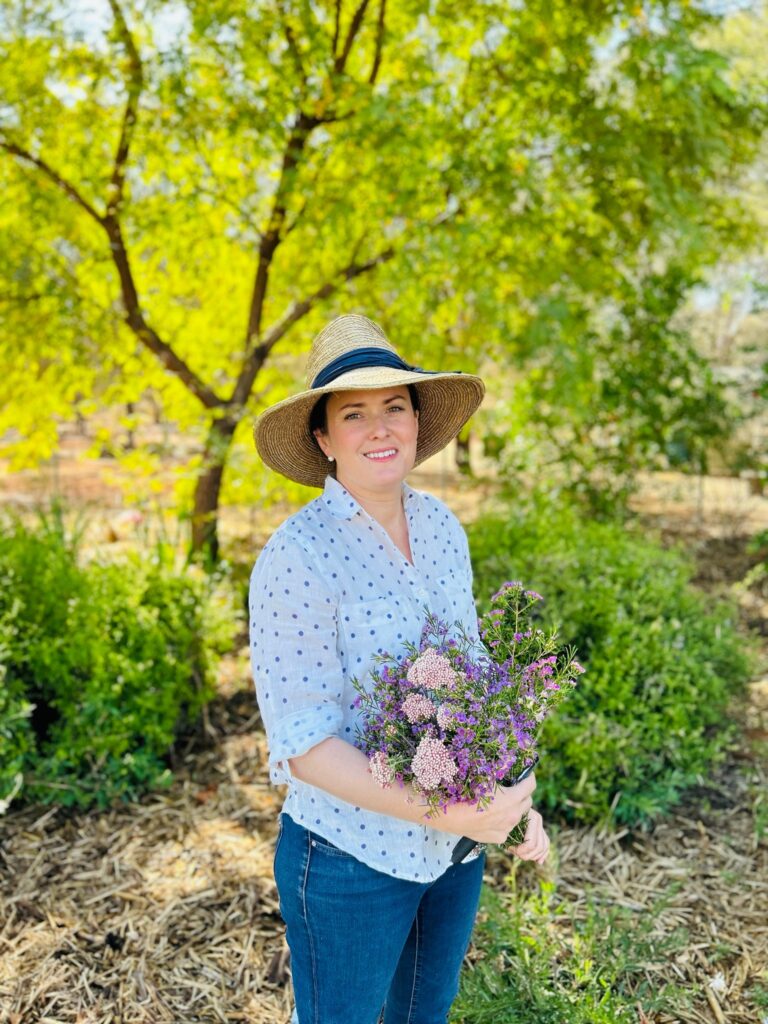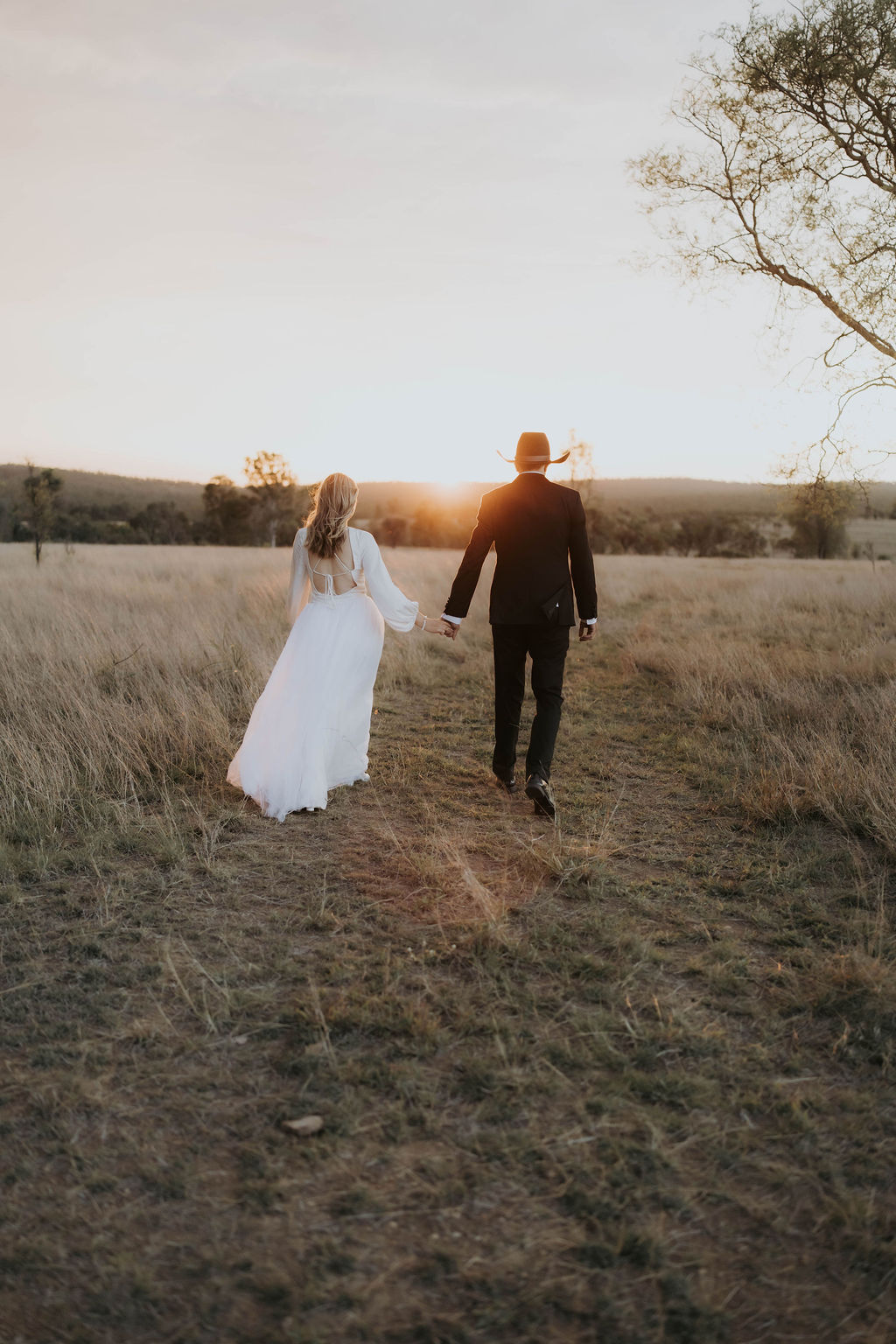Sign up to our mailing list for the best stories delivered to your inbox.
Using bore water on your garden involves a few tricks and techniques as Gin Gin Garden Club's Claire Austin discovers.
INTERVIEWS CLAIRE AUSTEN


I remember back when I started the Gin Gin Garden Club, in the middle of the drought in 2019. I wanted to learn from others how to keep a garden alive in dry conditions. It’s important for me to have an oasis, a place where I can escape the farm, to distract me from what is happening on the other side of the fence. I’m lucky to have bore water to sustain a garden when it’s dry, although this too can be a challenge, as Bec Brayley knows too well.
Bec lives with her husband Chris and three children at Corymbia, a property in the Mulga Lands just out of Charleville in south-west Queensland. As for many of us, the garden is her creative outlet, a sanctuary that she can retreat to in the height of summer.
After buying their property in 2012, in 2015 Bec and Chris started to establish a new garden in the harsh south-western Queensland conditions: no easy feat, with hot summers and cold winters. Between raising small children, there’s been no time for plants that require extra attention, such as putting frost covers on and off. Plants that do well are repeated.
“The scientist in me loves that gardening is continual experimentation: trialling different plants, watering systems, soil treatments, working out what works well for my area,” says Bec, who has a degree in Applied Science (Animal Production) and works as a biosecurity officer for the Queensland Department of Agriculture and Fisheries.
Claire Austin chats to Graziher’s Life on the Land podcast about spring time in the garden. Article continues below.
While the lush lawns and bounty of flowers and vegetables in her garden looks effortless, the creation of this garden has not been without its share of challenges. “Bore water, alkaline soils, frosts down to −4° and heatwaves over 45° have really tested my gardening skills,” she says.
“The garden bore water is sourced from a riverine aquifer, not the Great Artesian Basin, so it’s a slightly better pH than the artesian bores in the area; however, it’s saltier.” Despite the challenge of bore water, Bec is able to grow beautiful roses, and credits their thriving to the planning and preparation of the soil and water.

BEC’S TIPS FOR BORE WATER
1. Make Your Beds
Raise garden beds to create a well-draining soil profile.
2. Time It Right
Use programmable timers and don’t water in the heat of the day.
3. Use Drippers
Water generously under mulch, as long as your bore water is not hot. Plants hate getting bore water on their leaves.
4. Mulch Well
Generous application of mulch insulates and keeps the soil temperature cool in summer.
5. Apple Gypsum
Use lots of gypsum to help water infiltration and leaching of salt.
6. Watch Acidity
If your plants aren’t growing, check your soil pH.
7. Replenish Soil
If your garden beds are old, bring in new soil that doesn’t have a build up of bore water in it.
“The beds are mounded up quite a lot and we water with drippers that have the regulator taken out of them so they are free flowing and don’t get clogged with ants. We water generously every two days under the mulch. I also make sure that my roses do not get any overspray from lawn sprinklers or garden sprays.
“Our bore water is not hot. You need to be mindful if you have hot bore water. I also fertilise every couple of months during the growing season,” she says.
Bec has created microclimates in her garden that provide excellent growing conditions for plants that otherwise would not survive in the area.
“Using the existing native mulga [Acacia aneura] trees has allowed plants to establish with frost and heat cover from the tall trees. As the garden has grown, I’ve trimmed or removed the mulgas to create room for the underplantings to spread out,” she explains.
The protection from mulga and other fast-growing trees gives her plantings of Westringia, Salvia ‘African Sky’, Eremophila glabra ‘Hello Cocky’, roses and crepe myrtles the environment to establish. “I love our garden and the way the beautiful mulga trees are incorporated into it. I love the birds that our garden brings in now that it is getting established,” Bec reflects.
Bec also likes to use hardy, dual-purpose plants to their full potential. “A grape vine trellised on the western side of the vegie patch and carport provides shade from afternoon sun and an edible food crop. And pomegranates are a beautiful, large deciduous shrub and they also provide fruit.”
As Bec explains, a garden is a lifelong experiment, full of successes, failures and curveballs. “I enjoy the turn of seasons, farewelling one plant that you’ve enjoyed while anticipating the arrival of the next. Someone once told me that ‘gardening is the slowest form of theatre’ and it’s very true.”
Claire Austin runs the Gin Gin Garden Club.
Subscribe to Graziher and never miss an issue of your favourite magazine! Already a subscriber? You can gift a subscription to someone special in your life.
To hear more extraordinary stories about women living in rural and regional Australia, listen to our podcast Life on the Land on Apple Podcasts, Spotify and all major podcast platforms.

What began as a postcard-perfect country wedding soon became a story of survival, strength, and the unshakable heart of rural Australia.

Current custodian Penny Lamont says the heritage garden is designed for easy-care and dry times.